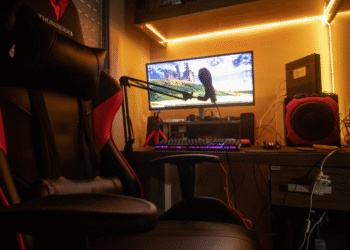Learn step-by-step how to give wine linux access to local user, fix permission errors, and run Windows apps smoothly on Linux
I want to be honest with you – when I first began molesting Linux, I felt like I was getting to know all this technology. I installed Ubuntu, became comfortable with the terminal and felt that a wizard command did not understand anyone else in my family. But then came alcohol. And to boy, it was a roller.
If you read it, there is a possibility that you are trying to run Windows on apps Linux use wine and you hit the same annoying chin as I did: Permissions. This dreaded “permit was denied” or a secret error that surprises you if your computer laughs at you.
So if you’ve ever asked your head yourself how to give wine linux access to local user, you’re in the right place. I have dragged there, I have broken the layout more often as much as I can count, and I got to know which ones work. And I’m going to go through step by step with many real -life stories and warn on the road “I make the same mistake”..
Why does this happen
Before we dive into the solution, let’s take a second to understand what’s going on here. Because trusting me, understanding this will save you from future headaches.
When installing a wine, it creates a wine pre -fix (basically a fake Windows environment) inside the home catalog – usually under ~/. Wine. Think of it as a small bubble where your Windows apps live and runs, separated from the rest of the rest of the rest Linux system.
Now it gets dirty:
- If you ever run the wine as a root (using a Sudovin), the files in it. The wine folder may be related to the root user instead of your local user.
- This means that your regular account – which you actually use – is not allowed to read, write or perform files there.
- And it leads to the ugly “access” errors.
This is like lending your bike to the neighbor, but then realizes that they changed the lock. Technically, it’s your bike, but you can’t cycle.
My first wine disaster (and what it taught me)
It’s a quick story here.
Back when I first switch Windows to Linux all time it was a program that I couldn’t leave right now: Notepad ++. Don’t ask me- I know you are awesome Linux the editor from there, but the notepads ++ was like an old friend.
So I installed alcohol, wrote:
Sudo wine notepad ++. Exe
… And boom, did this. I was excited!
But a week later I tried to run another app as my fixed user and found nothing but permission errors. I spent hours on the forums thinking that alcohol was destroyed. It turns out that I first drove out of my liquor catalog by driving like a mess.
Learned Lessons: Never drive alcohol as a mess until you want problems. This error is nice that I have started digging into training programs on how to give Vin Linux access to the local user – and now I want to protect you from the same headache.
Step 1: Check who is your liquor catalog
OK, let’s go to practical accessories.
Open and write your terminal:
Ls -ld ~/. Wine
This command shows the ownership of your wine catalog.
If you see your username there, congratulate you – you’re good. If you see “root” instead, then bingo – why you have problems.
For example:
Good case:
- DRWXR-XR-X 20 YOURUSER 4096 September 21, 10:00. Wine
Bad case:
- Drwxr-XR-X 20 Root Route 4096 September 21, 10:00. Wine
If this is a bad case, do not panic. We will fix it.
Step 2: Change ownership back to your user
Here comes the magical command:
Sudo chown -r youurrusername: Youusname ~/. Wine
Change use with your real Linux username.
What does it do:
- Chaown means change ownership.
- -R it means relapse (for all subfolders and files).
- The second part (your use: your name) ensures that both the user and the group owner are correct.
Think about telling Linux,”Hi, this folder and everything inside it is now with me. No more mess with the route.”
When I first ran this command, it felt like withdrawing control. Suddenly all my apps worked again. And when I realized that how to give wine linux access to local user something mysterious wine is not about the error – it’s about understanding permits.
Step 3: Avoid driving alcohol as a mess (forever)
I wish someone started tattooed on my arm when someone started for the first time:
To do. No. Run. Liquor. Seam. Root.
Why? Because:
- You want to root the file ownership (which we have just seen).
- This is a very great security risk – random random Windows the execution with root permits is basically inviting problems.
Instead, always run alcohol as your fixed user. If you really need a different environment, you can make separate wine prifers (I will explain it soon).
Step 4: If you test it, it worked
Now for the fun part. If things are fixed, then test.
Run:
Wine notepad
This standard wine version should open Windows notepad. If it works, congratulations – your local user now has the right access!
If you still see incorrectly, check the ownership with LS -LD ~/. Wine. Sometimes it takes logging again for changes in kicks.
Step 5: (Optional) Use a custom wine prefix
Here is a pure trick that I learned for a little more headache.
To dump them all instead Windows standard ~/. Wine folder, you can create separate wine prestines for different apps. This way, if someone breaks down, does not suffer others.
Example:
WidePrefix = ~/MygamePrefix Weinecfg
It creates a new vinatmosphere inside ~/MygamePrefix. It likes many “virtual” Windows installing “page -page. And each prefix can have its own permission, settings and apps.
Trust me – saved me when I got old Windows the game that required special dll and does not want to mess up my other apps. If you are experimenting and worried about breaking things, searching for prefixes is the same as learning. How to give wine linux access to local user.
General errors (and how I determined them)
Here are some pieces that I ran to find out to give Vin Linux access to the local user:
- Even after corrected ownership, “permission denied”
- Also check the subfolders:
Sudo chown -r youurrusername: Youusname ~/. Wine
- Sometimes only the top folder changes, but there are no files inside.
- Alcohol says “is not a prefix”
- This often happens when you happened to cycle in the form of root after fixing it.
- Solution: Review the Chaown command.
- Many users on the same machine
- If you are trying to share wine apps between different users, you will participate in permission.
- Best Practice: Give each user your own alcohol prefix instead of trying to share one.
- The app runs but cannot reach the files (eg document folder)
- Make sure your local user is allowed for these folders.
- Wine only has access to mirror folders.
Key Takings:
- At the end of the day, figuring out how to give wine linux access to local user is less about running the right command and more about understanding how Linux handles ownership and permissions. Once that clicks, it opens up a whole new level of confidence with your system.
- And hey, if I, the guy who once broke his Wine install running Notepad++, can figure this out, so can you.
Additional Resources:
- Wine Users Configuration − Permissions (AskUbuntu): Explains why Wine prefixes don’t work well when shared between users and how folder permissions or symlinks can help.
- Wine / Problem with Access Rights (Arch Linux Forums): Community thread on fixing “permission denied” errors in Wine using chown and repairing prefixes.
- Permission for All Users (WineHQ Forums): Discussion on letting multiple users access Wine apps, with solutions like group ownership and symbolic links.
















